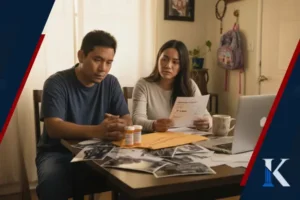Table of Contents
Summary
If you’ve suffered an accident, your personal injury claim can help you recover both economic and non-economic damages — from medical bills to emotional distress. Learn how compensation works under California law, what evidence strengthens your case, and why having a California personal injury lawyer matters.
An accident can instantly turn your world upside down — whether it’s an auto injury case, slip-and-fall, or workplace trauma. A personal injury claim offers a path toward justice and financial relief. It helps victims recover what they’ve lost — from medical expenses and lost income to the emotional and physical toll of recovery.
Understanding how compensation is determined can make a significant difference in the outcome of your case. Let’s explore the types of damages available and how California law protects injured individuals seeking fair recovery.
What Does Compensation Mean in a Personal Injury Claim?

In personal injury cases, compensation is designed to restore victims to their pre-accident condition as much as possible. This means covering financial burdens like medical bills, property damage, out-of-pocket expenses, and addressing pain, suffering, and emotional distress.
California law divides compensation into three key categories:
- Economic damages
- Non-economic damages
- Punitive damages (in rare cases)
Each category plays a distinct role in achieving justice and accountability.
Economic vs. Non-Economic Damages
Paano nga ba naiiba ang economic damages sa non-economic damages?
Here are the key differences to help you understand what each covers.
Economic Damages
Economic damages represent the tangible financial losses caused by an accident. They include measurable costs you’ve already paid or will need to pay in the future, such as:
- Medical treatment and surgical bills
- Physical therapy and rehabilitation
- Medical equipment (e.g., wheelchairs, braces)
- Lost earnings or reduced earning potential
- Property damage and out-of-pocket expenses
- Household services and funeral expenses (for fatal cases)
These are often verified through receipts, pay stubs, or expert testimony from medical and financial professionals.
Non-Economic Damages
Non-economic damages cover intangible losses that can’t be easily quantified. These reflect the human impact of an accident:
- Pain and suffering
- Emotional distress
- Loss of consortium (loss of companionship or support)
- Non-economic loss tied to catastrophic injuries
While subjective, these damages are just as important — they recognize the disruption and long-term hardship victims endure.
When Punitive Damages Apply
Ano naman ang punitive damages? Iba pa ba ito sa economic at non-economic damages?
Punitive damages are not about compensation — they are about punishment. Courts award them in cases involving egregious or reckless behavior, such as drunk driving or intentional harm. Unlike compensatory damages, punitive damages deter similar conduct in the future and uphold accountability in severe negligence action cases (CIV § 3294).
How Compensation Is Calculated Under California Law
California follows a Comparative fault rule, meaning your compensation may be reduced based on your percentage of responsibility for the accident. For example, if you were found 20% at fault, you could still recover 80% of your total damages.
Under California Civil Code—CIV § 1431.2—defendants are only liable for their proportion of non-economic damages. This ensures a fair allocation of liability in complex multi-party cases.
Common calculation factors:
- The severity and permanence of injuries
- Cost of medical care and ongoing medical treatment
- Impact on lost income and future economic loss
- Need for ongoing assistance or household services
Evidence Needed to Support Your Claim
Strong documentation makes your personal injury claim more credible. Below is a quick reference of key evidence types and their purpose:
Evidence Type | Purpose in Claim |
Medical records and surgical bills | Prove injuries and medical treatment costs |
Employment records | Show lost earnings or reduced work capacity |
Receipts for out-of-pocket expenses | Demonstrate additional financial losses |
Expert witness or expert testimony | Explain injury severity and long-term impact |
Photos/videos of the scene | Support the account of negligence or unsafe conditions |
Communication with the insurance company | Document settlement offers and claim responses |
Why You Need a Lawyer on Your Side
Navigating the legal process without guidance can be overwhelming. A skilled California personal injury lawyer helps evaluate damages accurately, negotiate with the insurance company, and ensure every category of loss — financial, emotional, or physical — is addressed.
Having a lawyer also strengthens your case through:
- Coordinating with expert witness professionals
- Gathering comprehensive documentation
- Ensuring all filing deadlines are met
- Advocating for fair compensatory damages
FAQs
Can I claim compensation if I’m partially at fault?
Yes. Under comparative fault, you can still recover damages proportionate to your degree of fault.
Are punitive damages common?
No, they are rare and reserved for extreme misconduct or intentional wrongdoing.
What happens if the insurance company undervalues my claim?
Your lawyer can negotiate or take the matter to court, ensuring that you are fairly represented in economic and non-economic damages.
What if my injuries lead to lifelong disability?
Severe or catastrophic injuries may entitle you to long-term economic loss compensation and future medical care coverage.
Every Step Toward Healing Starts with the Right Legal Help
Recovering from an accident involves more than just healing — it’s about restoring your quality of life. Knowing your rights is essential for dealing with medical bills or emotional distress. Our dedicated California personal injury lawyer can help assess your case, pursue maximum compensation, and stand by your side every step of the way.
If someone else’s negligence has harmed you or a loved one, contact us today for a free consultation to learn how we can assist you.




